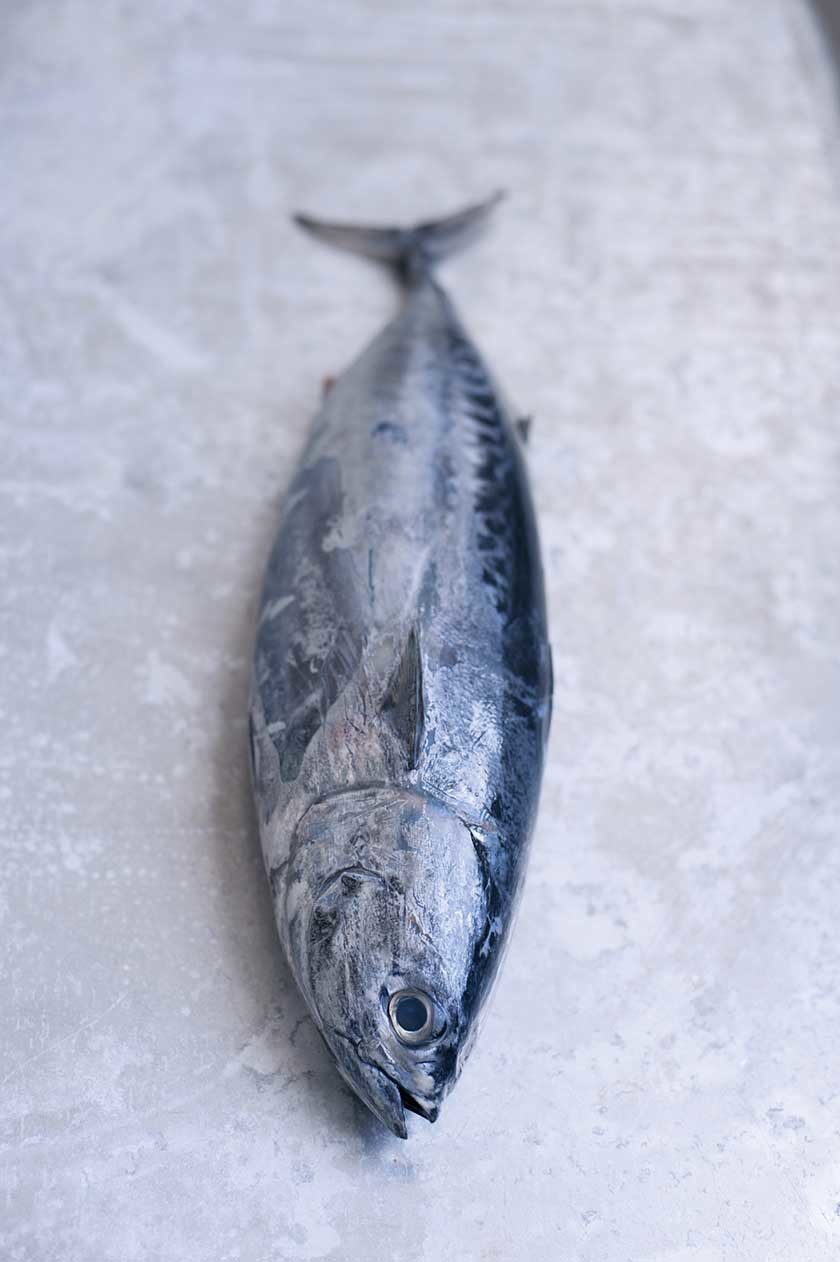Tuna
Highly prized in Japan and the star of the show at Spanish Christmas, this exotic species is so much more than a sandwich staple, says Clarissa Hyman
Tinned tuna is an invasive species, rather like grey squirrels and Japanese knotweed, although a lot more welcome. Once upon a time, within living memory, in fact, tins of pink and red salmon were high-tea staples in the British household with the fresh fish reserved solely for fancy occasions. It was suspiciously foreign. Not so today.
Now we live in a world of niçoise, steaks, sashimi and fillets. But there will always be a place in our hearts for tinned. Be that in a sarnie with mayonnaise, on a jacket potato with its happy bedfellow, tinned sweetcorn, or stirred through a pasta sauce. Today, tinned is given ‘added value’ with spices, garlic and chilli or lime and mustard. Grilled, fresh tuna steaks are now the staple in bistros from Bangor to Bognor or beaten into submission in Mediterranean casseroles. We may have taken tuna into our homes and hearts, but we haven’t always learnt how to handle it. To further complicate matters, there is the ever- sensitive issue of sustainability.
Tuna, along with mackerel, belongs to the Scombridae family, distinguished by the muscular, sleek and streamlined bodies that make them such powerful swimmers. Olympic champions of the fish world, they can migrate over huge distances in their team colours of blue and blue-green on the back with silvery sides and belly. Tuna species includes the bluefin, the yellowfin, the bigeye, the larger long-fin or albacore, bonito and skipjack (aka striped bonito).
The endangered status of bluefin tuna as a result of both over-fishing and ocean warming is a cause célèbre in the food world, although the public awareness is varied, uneven, and sometimes confused. This is not surprising, given the lack of global regulation and tangle of voluntary compliances, but the bottom line, according to the Marine Conservation Society (MCS), is that southern and Atlantic bluefin, both caught at sea and farmed, are top of the endangered list.
The shimmeringly beautiful bluefin can weigh up to 900 kilos and measure four metres, although fish of such size are rare. In some countries, bluefin is called ‘red tuna’, and the prize cut is the belly, known as ventresca in Italy, which commands the highest price. The desirability of its meaty flesh has made bluefin both expensive and vulnerable to over-fishing, especially, as the late food writer Alan Davidson delicately put it, by Homo japonicus and by the growing cult of sushi and sashimi around the western world.
Strangely, given the sky-high prices paid in the Tokyo fish market for bluefin, it was once considered quite unsuitable for sushi. According to the late fish expert William Black, before the days of hand-rolled nigiri sushi, rice and fish would be pressed under a weight and left to ferment. The much sought- after belly, now so expensive, was once considered inedible. It was not until the 1920s that the Japanese began to appreciate and crave raw as opposed to marinated tuna.
To make the exacting sashimi grade, tuna must be super- fresh, have a good red colour, a high fat content and a lack of bruising. The colour is actually affected by the method of catching: netting is problematic as unless the fish is quickly killed, the flesh turns an unappetising brown. The fat content may relate to the time of year. Fish that are about to spawn are ideal: rich, dense, fat and superbly tasty.
A more affordable alternative to fatty bluefin is the leaner yellowfin found in tropical or subtropical climates and available, unlike the former, most of the year. However, many stocks have also been overfished, apart from those in the Western and Central Pacific. The method of catch is an issue, so always look for the Marine Stewardship Council (MSC) blue Ecolabel.
Bigeye tuna is a relatively large species, commonly found in cold, deep waters. It is often sold as fresh or frozen steaks, and is increasingly popular as a bluefin substitute, although the meat has to be carefully selected. Its sustainability rating is uneven: some stocks are overfished; while others have improved. Again, keep an eye out for the blue tick.
The relatively small skipjack swims in tropical waters and has the habit of leaping out of the water and ‘skipping’ along the surface when chasing smaller fish. It exists in huge, though diminishing, numbers in the Pacific. The light meat is the first choice for canning, but depending on how and where it is caught, the species can range from sustainable to unsustainable. Again, check if the product is MSC approved.
Longfin or albacore – white tuna in France – is a relatively small fish. It is common as far north as the Bay of Biscay on the European side of the Atlantic, but less likely to be found off the US coast as it is particularly sensitive to water temperature. The light-coloured meat is usually canned as the flesh turns a rather unappetising brown on contact with air. An MSC label will ensure it’s a sustainable purchase.
By contrast, shoals of bonito swim on both sides of the Atlantic and the meat compares favourably with bluefin: it is highly popular in the north of Spain, where it is often the main dish for Christmas dinner in the Asturias. There is also fierce competition in the Basque region for the iconic bonito stew called Marmitako.
Fresh tuna meat is compact with a similar ‘heavy’ mouthfeel that we associated with meat. Steaks and slices are best braised gently or quickly grilled or seared with a few drops of olive oil. In the latter case, underdone is preferable: treat it like fillet steak. Overcooked or badly cooked tuna is completely unpalatable. Butter and creamy sauces are not natural partners, so by and large stick to strong, bright flavours, such as garlic and lemon, lime, chilli and coriander, basil and mint.
We may well have grown up on tuna sandwiches, although now we settle for nothing less than super-fresh steaks.
Apart from when it comes to teatime, of course.

Recipes
Get Premium access to all the latest content online
Subscribe and view full print editions online... Subscribe




